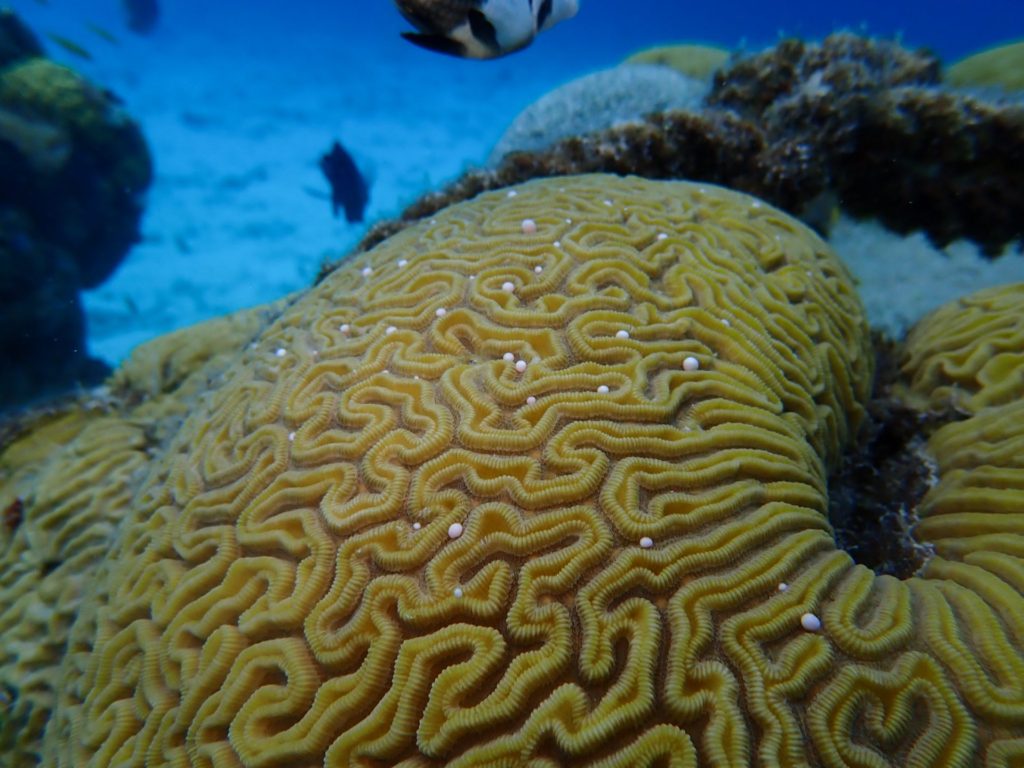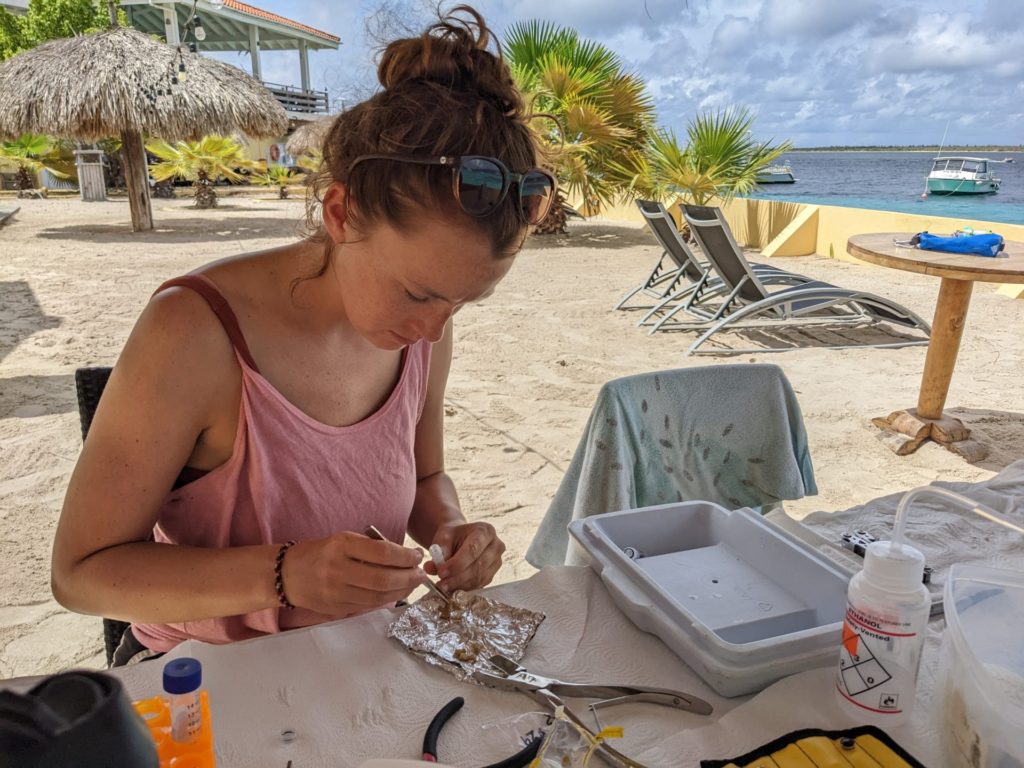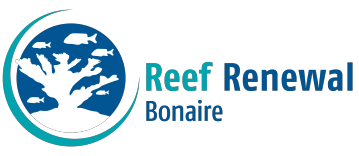By Allie Blanchette
About 25 different genotypes of staghorn coral (Acropora cervicornis) and 30 genotypes of elkhorn coral (Acropora palmata) are raised in Reef Renewal Foundation Bonaire’s (RRFB) nurseries before eventually being outplanted onto the reef. Florida State University PhD candidate Allie Blanchette teamed up with RRFB to conduct genetic analysis on A. cervicornis and A. palmata samples and explore the importance of coral diversity to reef restoration.
What’s a Genotype?
The term “genotype” has several definitions in biology. When applied to coral, genotype signifies the unique genetic makeup of an individual. All species of coral, including A. cervicornis and A. palmata, can easily “clone” themselves. This is when one branch of coral breaks into two pieces, and both fragments continue to grow as separate individuals that share the same genotype. This process is referred to as asexual reproduction and occurs when strong natural forces such as storm surges force coral to break and spread across the reef. As a result, there can be multiple individuals of a single genotype.
In contrast, new genotypes are created through sexual reproduction (i.e. egg and sperm fertilization). During spawning, different types of coral release their gametes in different ways. Though some species have male and female individuals, A. cervicornis and A. palmata are hermaphrodites, meaning each individual produces both sperm and egg. Once the gametes of two distinct individuals of the same species are fertilized in the water column, the developing coral is genetically different from its parents and a brand new genotype is created.
RRFB harnesses both types of reproduction to produce coral: asexual fragmentation and sexual larval propagation. Through fragmentation, many individuals of the same genotype can be produced with relative ease. Through larval propagation, an array of genetically unique individuals with different genotypes can be created.

Why keep track of genotypes in coral restoration?
Many important biological traits are linked to genes. In humans, we know that genetics can play a role in determining our metabolism, height, and even chances of developing certain cancers. Scientists have found that genetics can play a role in determining how fast corals can grow and how susceptible they are to diseases and other stressors.
We cannot know yet how each coral will respond to future environmental conditions such as climate change and disease outbreaks, but by outplanting different genotypes with different biological traits, we can increase the odds that there will be genotypes that can withstand future stressors. In short, having many genotypes increases the chances of having a more resilient coral reef!
How can you tell coral genotypes apart?
RRFB has been propagating thousands of coral branches in their nurseries every year. While these corals all look relatively similar to one another, they actually stem from 25 different staghorn individuals and 30 different elkhorn individuals that were originally collected from Bonaire’s reefs. These different lineages are presumably genetically distinct (i.e. not clones), because they were originally collected from individuals from several distant locations on the reef. However, it is important to confirm this assumption with genetic analyses.
Allie’s study will confirm that each lineage is unique by using a method called microsatellite genotyping
This process involves two major steps: collecting DNA samples and running laboratory analysis. “Microsatellites” are specific regions of DNA that can be compared between individuals, and “genotyping” is the process of comparing DNA (in this case microsatellites) to determine whether individuals are genotypically different. The process can not only confirm that the lineages are genetically distinct, but also which genotypes are more closely related to each other.
DNA Sample Collection
In the summer of 2022, Allie and RRFB staff collected coral samples by clipping small pieces of coral branches from each lineage grown in their nurseries. The coral samples were brought to shore and immediately rinsed with freshwater, as seawater can contain DNA from other marine organisms. The samples were then placed in tubes filled with a liquid preservative that prevents them from rotting; it’s important to put each sample in its own tube to prevent DNA contamination.
Laboratory Analyses
DNA will be extracted from each sample to separate it from other molecular components like fats, proteins, and calcium carbonate from the coral’s skeleton. Many copies of the DNA are then made using Polymerase Chain Reaction (PCR). Often used in COVID 19 testing, the PCR method amplifies a specific section of DNA – whether it’s the coral microsatellite region or that which confirms the identity of the COVID-19 virus. Making extra copies of the DNA greatly improves our ability to read and analyze it, a process known as DNA sequencing. By sequencing DNA across lineages, the team can compare microsatellite regions and determine whether or not each lineage has its own unique genotype.
The Value of Genotypic Analysis
By genotyping A. cervicornis and A. palmata, we will have a better understanding of how our restoration efforts are supporting the genetic diversity and resiliency of Bonaire’s reefs. Allie will also use these data to conduct further research on how coral health and performance is influenced by their genetics.
“This work is part of my broader dissertation research to study corals’ capacity for adaptation. I am so excited to be collaborating with Reef Renewal Foundation Bonaire to conduct research that will improve our understanding of coral reef ecology while also contributing to RRFB’s restoration program.”

To learn more about research happening in Allie’s lab (run by Dr. Andrew Rassweiler and Dr. Sarah Lester at Florida State University), check out their webpages and social media channels:
Note – samples were collected by Reef Renewal Bonaire staff, as part of permitted restoration activities, Samples were imported to the United States under CITES permit BQ/2022/002, and were declared to U.S. Fish & Wildlife upon arrival in Miami, FL.







Amazing! I will look forward to any updates you share from your studies.